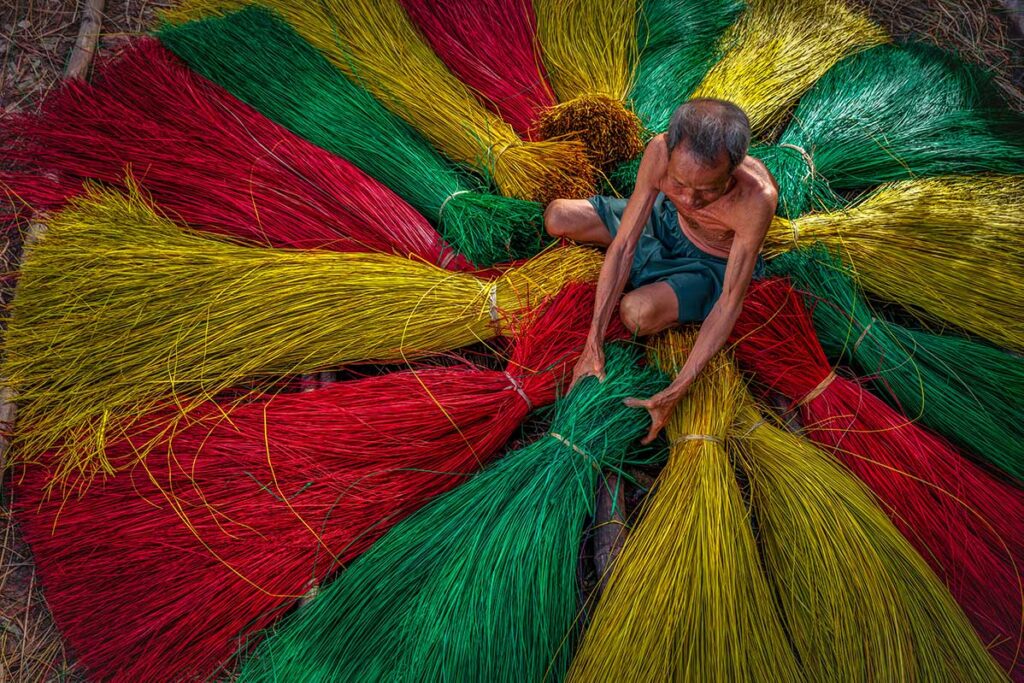What is Dinh Yen Village?
Background & History
Dinh Yen is a small village in Lap Vo District, Dong Thap Province, about 30–40 kilometers from Sa Dec. Mat weaving started here in the 1920s and quickly became the main livelihood for many families. The craft reached its peak in the 1980s when mats from Dinh Yen were exported to Thailand, Cambodia, and even parts of Eastern Europe.
Although demand has declined with the spread of factory-made products, mat weaving remains part of everyday life in the village. In 2013, the Ministry of Culture officially recognized Dinh Yen’s weaving as a National Intangible Cultural Heritage, helping to preserve both the craft and its cultural importance for future generations.
The Mat Weaving Tradition
The mats are made from sedge, a type of rush grass that grows along the Hau River and nearby wetlands. Families harvest the sedge, sun-dry it, and then boil it with natural or chemical dyes to create bright colors. After dyeing, the material is dried again before weaving can start.
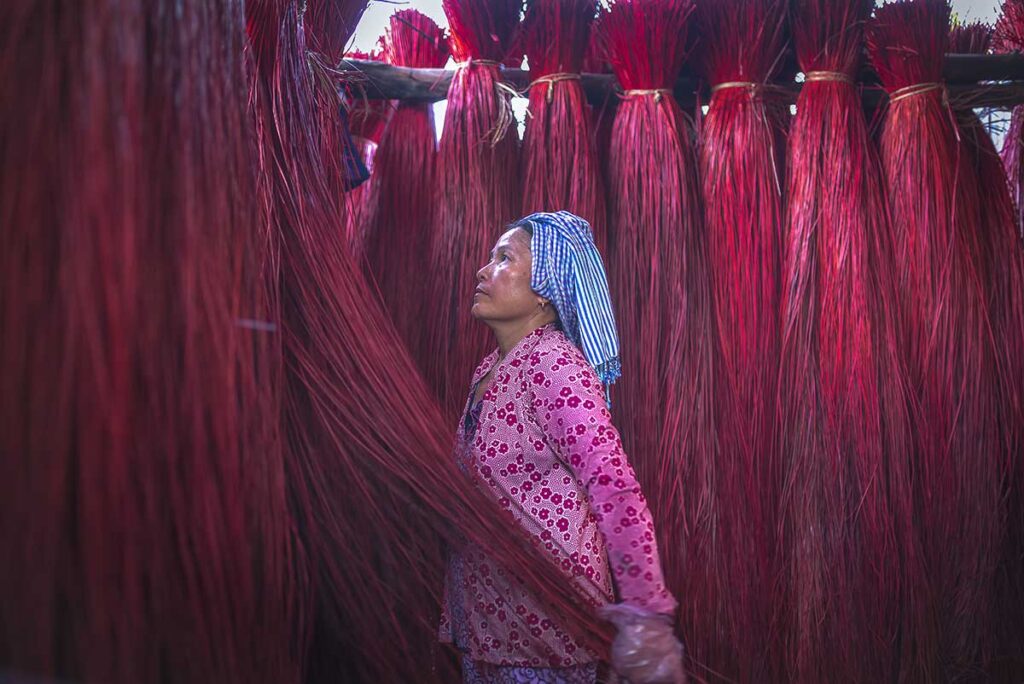
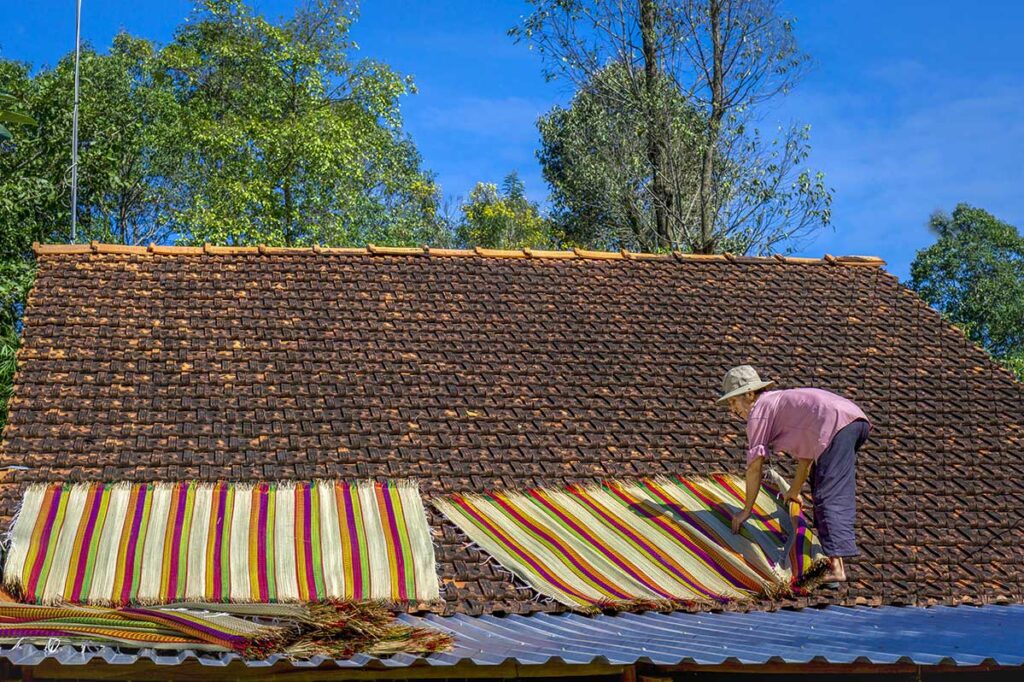
Traditional weaving requires two people working side by side on a wooden loom. The process is slow but allows for intricate designs and strong mats. Today, many households use mechanical looms to save time and increase output, though decorative details and complex patterns are still done by hand.
The mats come in several types. Plain mats are the most common and are used in everyday homes for sleeping or sitting. Floral-patterned mats and the so-called “scale” mats show more artistry, with carefully arranged colors that form repeating designs. Wedding mats, often larger and more ornate, are still given as traditional gifts in rural areas.
Highlights of visiting Dinh Yen Mat Weaving Village
1. Watching the weaving process
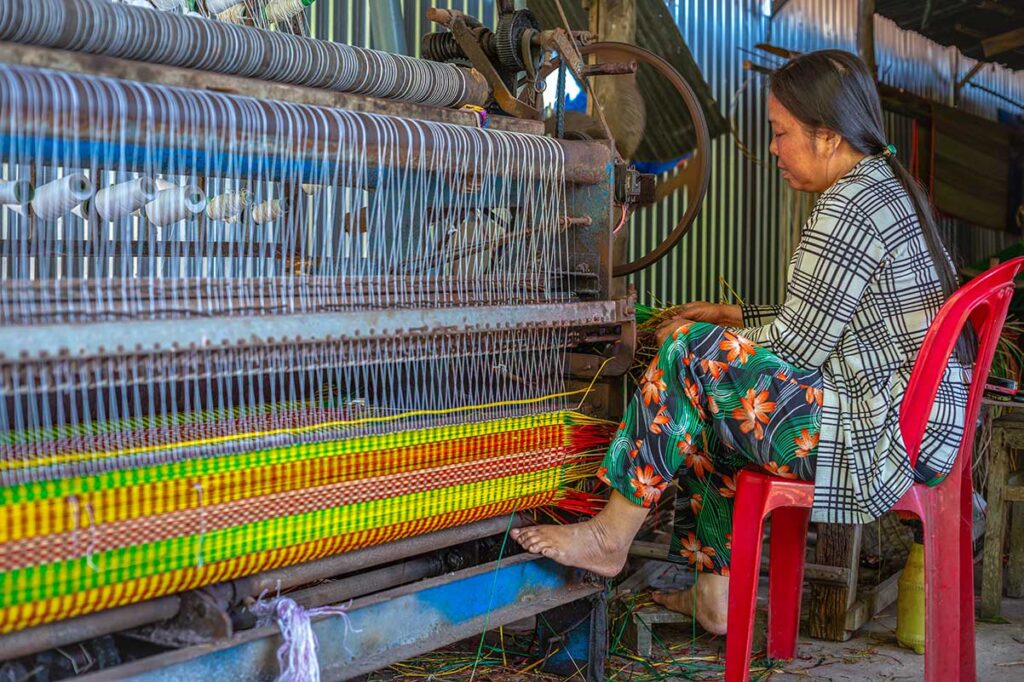
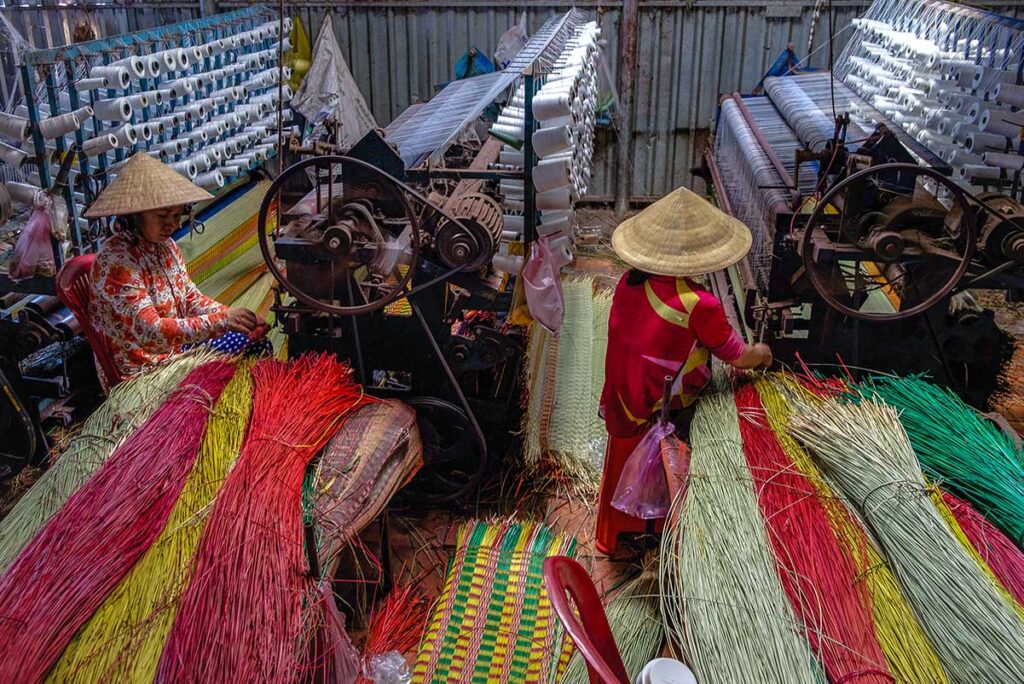
The main attraction of Dinh Yen is simply walking through the village and seeing families at work. Weaving is usually done right at home, with looms set up in open-fronted houses or in small courtyards. You’ll often find elderly artisans patiently working side by side with younger relatives, a reminder of how the craft has been passed down through generations. The rhythmic clatter of looms mixes with the chatter of daily life, giving the village a lively but laid-back feel. Visitors are generally welcome to observe, though it’s polite to ask before stepping inside someone’s workspace.
2. Colorful mats drying in the sun
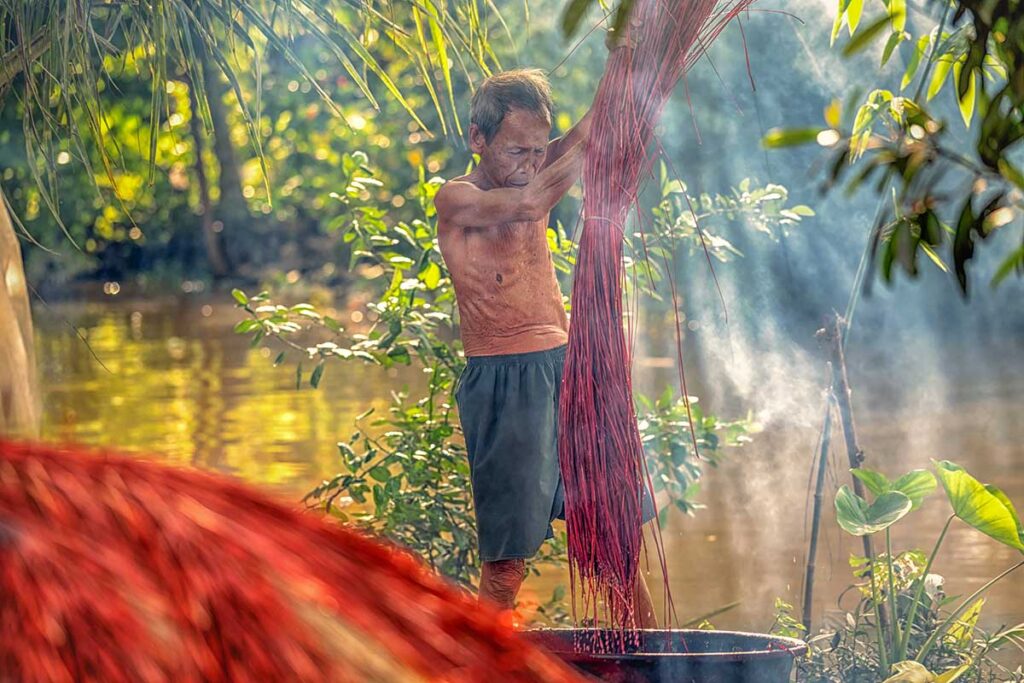
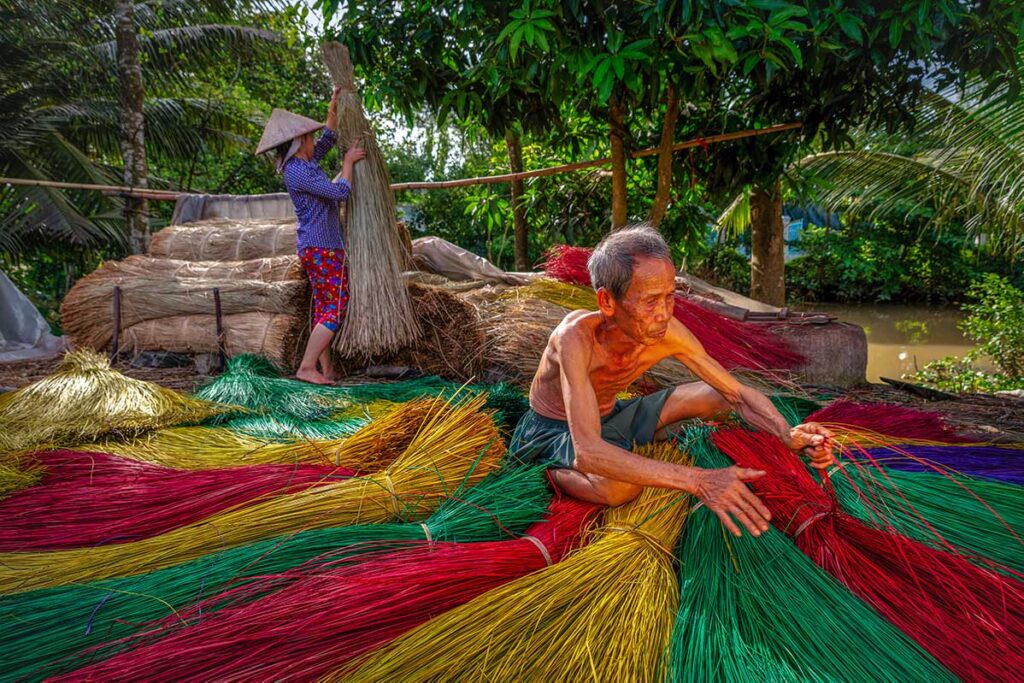
Perhaps the most photogenic part of the visit is the sight of dyed sedge and finished mats drying along the village roads. Depending on the time of day and season, you may see bundles of grass in bright red, yellow, green, and purple laid out in the sun, or rows of completed mats catching the breeze. On sunny days, the colors really pop and make for striking photos. If the weather is cloudy or rainy, however, there may be fewer mats outside, so timing does make a difference.
3. Dinh Yen Temple (Communal House)
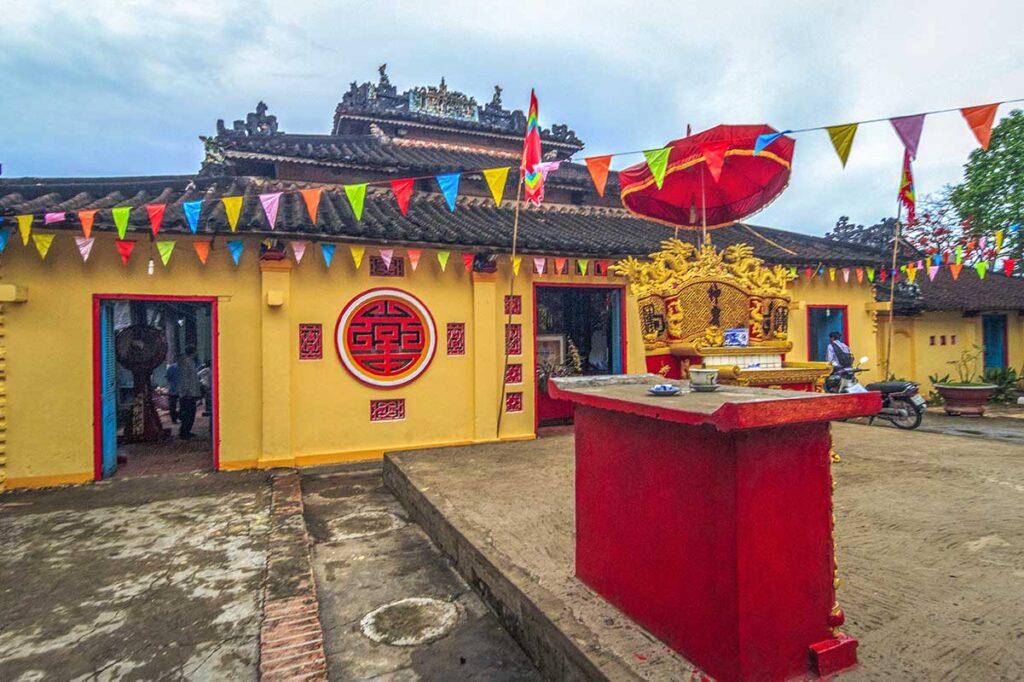
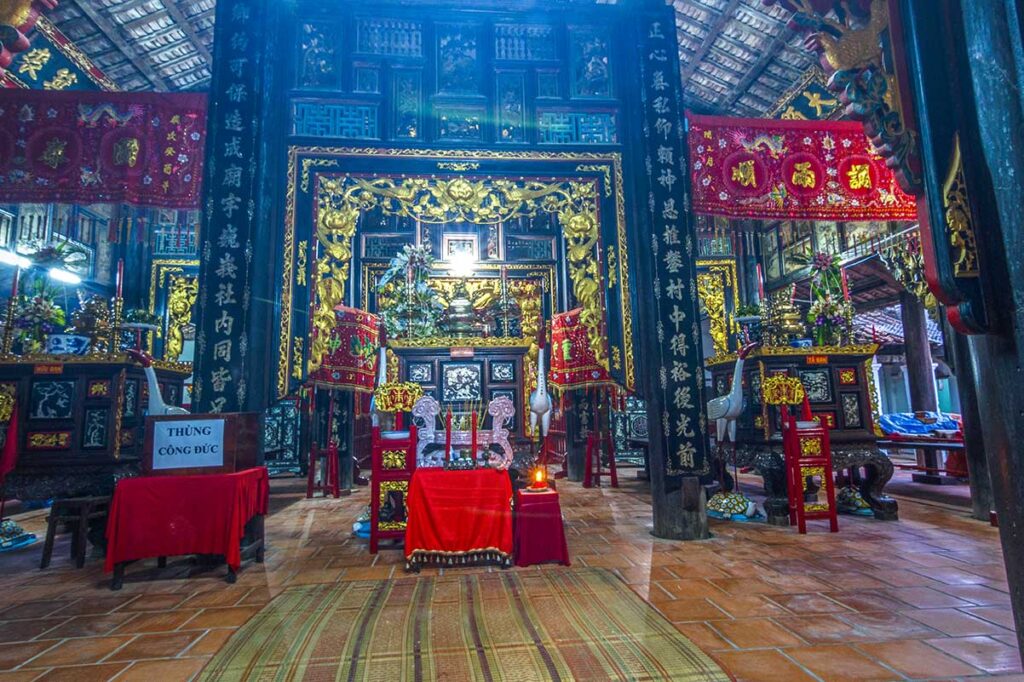
In the heart of the village stands Dinh Yen Temple, also known locally as a communal house. It’s a traditional building where villagers worship, honor their ancestors, and hold cultural rituals. Architecturally it’s not the most impressive temple in the Mekong Delta, but it adds cultural depth to a visit and helps explain the community spirit that surrounds the craft.
4. The “Ghost Market” of Mats
Older locals sometimes talk about the village’s once-famous “ghost market.” This was a late-night trading session where mats were bought and sold in the dark, without electric lights, giving the market its name. The practice disappeared years ago with better roads and transport, but it remains an interesting part of the village’s history. You won’t experience it today, but it’s a reminder that Dinh Yen was once a key center of mat trading across the region.
Location and How to get there
Where is Dinh Yen Mat Weaving Village?
Dinh Yen is located in Lap Vo District, Dong Thap Province, in the heart of the Mekong Delta. The village lies about 33 km from Sa Dec (roughly a 45-minute drive) and a similar distance from Long Xuyen in neighboring An Giang Province. Both towns make convenient bases for a half-day visit, but it’s too far to justify a direct day trip from Ho Chi Minh City unless combined with other Mekong highlights.
Transport options
- Private car or driver – The most straightforward and comfortable option, especially if you’re short on time or want to combine the visit with other sights.
- Tour with a guide – Local tours often link Dinh Yen with Sa Dec’s flower gardens, Xeo Quyt Forest, or Long Xuyen’s floating market, giving you more context and saving the hassle of navigation.
- Motorbike rental – Possible if you’re confident riding in Vietnam’s traffic and rural roads. The route is flat but involves narrow bridges and busy stretches.
- Boat tour – The village sits along a canal that connects to the Hau River, so in theory, you can arrive by boat. This is more of a special arrangement than a regular option, but it makes for a scenic approach.
- Cycling tour – Best for adventurous travelers with good quality bikes. Roads are flat and pass through rural scenery, but distances are long, so it’s better suited for organized cycling tours rather than casual riders.
Nearby sights
The main appeal of the area is the rural Mekong landscape itself: winding canals, rice paddies, and quiet villages. If you’re planning a broader trip, consider combining Dinh Yen with:
- Sa Dec Flower Village – especially lively around Tet (Lunar New Year), about 45 minutes away.
- Long Xuyen Floating Market – one of the more authentic wholesale floating markets in the Mekong Delta, also about 45 minutes away.
- Local temples and markets – scattered through the countryside, not major tourist sites but good for a more authentic look at daily life.
Or read our complete Dong Thap travel guide for more tips what to see and do.
Practical visiting information & Tips
Entrance Ffee & Opening hours
There is no entrance fee to visit Dinh Yen Mat Weaving Village, and the village doesn’t have official opening hours. It’s a living community rather than a tourist site. The best time to go is during the day when mats and dyed sedge are laid out in the sun to dry.
Best time to visit
The dry season (December to April) is generally the best period for photography, as you’re more likely to find bright skies and plenty of mats drying outside. Within the day, mornings and late afternoons are most rewarding—light is softer, and you’ll often see more activity in the weaving workshops.
Photography
This village is especially appealing for photographers thanks to the colorful sedge drying along the roadsides. The mix of daily life, weaving looms, and vibrant materials creates strong visuals. Just remember that you’re walking through people’s homes and workspaces—ask before entering and be respectful when taking close-up photos of artisans.
Facilities & Services
Dinh Yen is not set up as a tourist attraction, so don’t expect much in the way of facilities. English is rarely spoken, and there are no organized shops or cafés. Food options are minimal, so it’s best to bring water and snacks with you or plan your meals in Sa Dec or Long Xuyen. Because of the limited infrastructure, visiting as part of a guided trip can make logistics easier, though independent travelers will still find it accessible.
Is Dinh Yen Mat Weaving Village worth visiting?
Dinh Yen Mat Weaving Village is an authentic and colorful stop, especially if you’re interested in traditional crafts or photography. The sight of dyed sedge drying in the sun and families working on their looms offers a glimpse of rural Mekong life that hasn’t been turned into a tourist show. It’s also one of those places where you’ll likely be the only foreign visitor, which adds to the off-the-beaten-path feel.
That said, the village is small, and aside from watching the weaving process and strolling through the lanes, there isn’t a lot to “do.” On cloudy or rainy days, the colors won’t be as striking since fewer mats are drying outdoors. It also requires a bit of effort to get here, and there are no real facilities for travelers.
In short, it’s worth visiting if you’re already exploring Dong Thap, Sa Dec, or Long Xuyen, or if you’re looking for an authentic photography stop in the Mekong Delta. But it’s not a place to travel all the way from Ho Chi Minh City for on its own—better to include it as part of a broader trip through the region.
